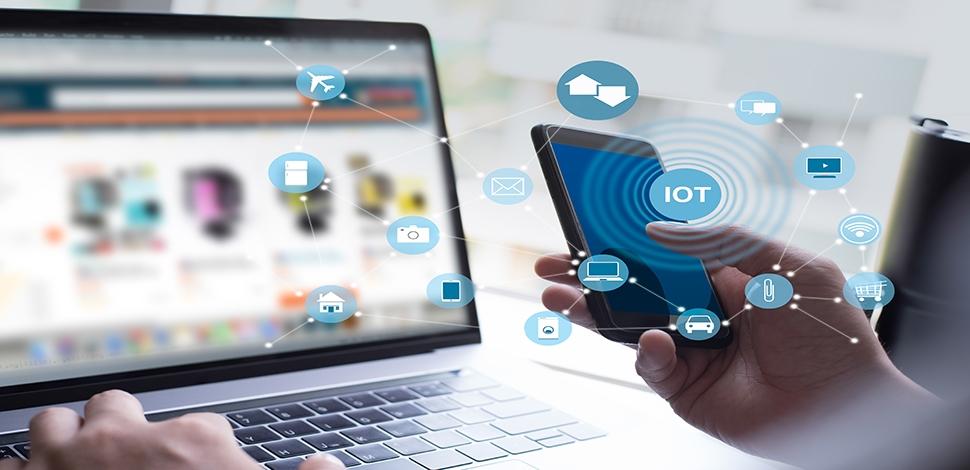ul. Strzegomska 2-4
53-611 Wrocław
NIP 8992786490
KRS 0000608120
REGON 363987723
Global4Net Sp. z o. o.
+48 71 358 41 00
© 2009 – Global4Net. All Rights Reserved.

Omnichannel has come to the e-Commerce industry for good. It has become the norm for every self-respecting seller. However, we should consider whether this is only a temporary trend, followed in an unknown way, or determinant of the development direction of technology companies? And if it is the latter, then shop owners should know how to integrate omnichannel solutions in their e-Commerce.
Technological development over the last 10 years has been staggering. The stores still mainly consisted of stationary sales, and there were not many online store owners on the market. However, the changes that have occurred force developers to adapt to new requirements. The communication with the user must be more extensive and multi-channeled. The buyer on the internet, due to the nature of shopping, needs extensive product information, the ability to compare prices or narrow the scope of the product sought. Online stores have active promotion in social channels, and users expect it. This level of communication is necessary and so are the omnichannel integrations.
The key to success for any online store is a proper integration of sales management systems. The main system working with e-Commerce is ERP, without which the integration of omnichannel is impossible. Apart from that, the product information management system will be very useful to maintain a consistent, high quality database.
This is a key issue because the system must support several thousand products. The quality of its work is directly influencing the consumer satisfaction and an increase in the conversion rate. The appropriate CMS (Content Management System), designed to support e-Commerce, is the best way to more efficient targeting your group of buyers.
When choosing a service and management system, one should take into account the further development of the technology segment that serves e-Commerce. The flexibility and ability to integrate dedicated tools is the best solution for a store thinking about future development. The method of adding the necessary tools allows later changes in individual system modules instead of its total replacement.
Ensuring a consistent use of multiple channels when shopping online directly affects the conversion rate. The implementation of the PIM (Product Information Management) is necessary to make contact with the customer at a high level. Centralization of product information management will facilitate, but above all speed up, work in the online store in many situations and environments. If you have an highly varied assortment or product information in many languages, on markets with different currencies, and finally on many channels – the PIM system is essential. Not using the PIM system will not stop the store, but it will certainly slow it down. It will certainly reduce the effectiveness of the integration of omnichannel. It will also leave a lot of space for error and inconsistency.
CRM system (Customer Relationship Management) in e-Commerce will be responsible mainly for the user experience. It will do this by collecting extensive information about customers and their purchases, thanks to which you will gain invaluable insight into your offer and brand’s interest. The better the diagnosis will be, the better you will be able to adjust to your needs, in order to increase the conversion rate. Individual treatment will certainly convince many consumers, and in the era of mass migration from stationary sales to e-Commerce, such an advantage of an online store is very important and still desirable.
Have you ever wondered how many systems work when you shop so that you can do it? The e-Commerce store is a complex organism, in which many organs cooperate. The ERP deals with warehouse control, ensuring the availability of the product and the exchange of information about it. Then the system makes orders by correcting the stock, creating a shipment and a bill for purchases.
The CRM system takes care of customer information. It remembers necessarily to complete the transaction or downloads data from the database and saves information about the order by creating a consumer profile. The buyer then receives all purchase information, such as the stage on which the order is made, delivery details and tracking of the shipment. These data are displayed on the store’s website on the client’s account.
There will also be payment information. The ERP and CRM cooperation is required here because the product prices are stored in ERP as part of the product information. However, these systems contact due to personal changes in the price of the product, such as promotions, individual purchase conditions or discount codes. The payment itself is made by the ERP system.
So, if you think that your company might benefit from this kind of strategies and technologies, contact us and we will show you how to integrate the omnichannel in your e-Commerce.
Write to us




